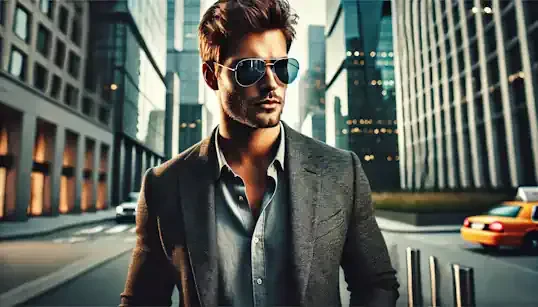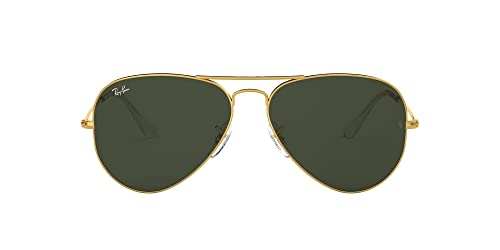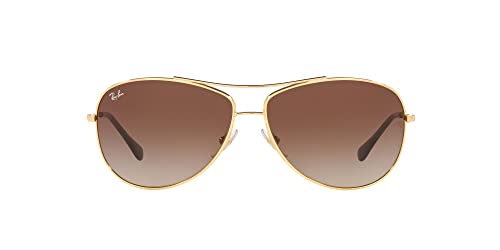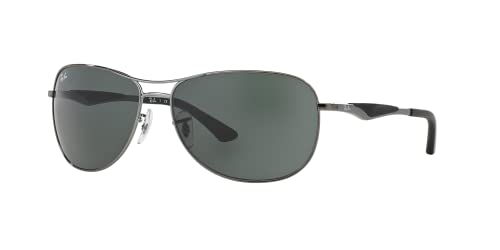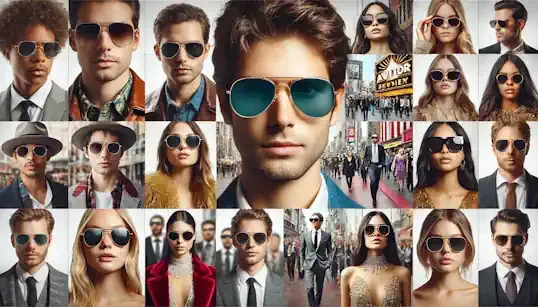The moment they slide onto the bridge of your nose, something undeniably shifts. A subtle straightening of posture, a sharpening of gaze, an almost imperceptible air of self-possession takes hold. Aviator sunglasses. They are more than mere eye protection; they are potent visual cues, carriers of ingrained cultural meaning, and, arguably, subtle psychological instruments. They project, almost instantaneously, an aura of confidence, an undeniable coolness that transcends fleeting fashion trends and resonates across generations. But why? What is it about this particular eyewear style that so consistently and universally evokes these specific psychological responses? Is it simply learned association, a trick of cultural conditioning? Or are there deeper, more fundamental psychological mechanisms at play, at the very heart of the aviator’s enduring appeal? This is not merely an exploration of style, but a deeper dive into the psychology of perception, the subtle visual language of confidence, and the enduring allure of coolness as embodied by this iconic eyewear. We will unpack the layered psychological reasons why aviator sunglasses so reliably project this powerful and universally recognized aura, delving into historical roots, dissecting design elements, and exploring the intricate interplay between the wearer's psychology and the external perception they project.
To truly understand the psychological power of aviators, we must first examine their historical roots, tracing the origins of their ingrained association with authority and command. Aviator sunglasses were not born in a designer’s studio, but in the functional crucible of military aviation. Their genesis is inextricably linked to pilots, those figures of skill, daring, and authority who navigated the nascent skies. Military uniforms and accessories, by their very design, are intended to project authority, discipline, and an unwavering sense of competence. Every element, from crisp lines to polished brass, from precisely placed insignia to the very eyewear worn, contributes to this carefully constructed visual language of command. Aviator sunglasses, as a crucial component of pilot’s gear, became instantly imbued with these associations. The very act of donning them, for pilots in the early days of aviation, was a symbolic act of assuming authority, preparing to command a powerful machine and navigate the complexities of flight. This inherent association with military authority, with figures who embody skill, discipline, and control, became deeply ingrained in the collective unconscious, a psychological cornerstone upon which the aviator’s aura of confidence would be built.
This association with authority was further amplified by the subsequent adoption of aviators by law enforcement and other figures of control. Police officers, secret service agents, and other individuals tasked with maintaining order and projecting an image of unwavering authority, readily embraced aviator sunglasses as part of their visual uniform. This strategic adoption reinforced the already potent psychological link between aviators and command presence. Seeing authority figures – those tasked with maintaining law and order, with wielding power and control – wearing aviators solidified their visual association with competence, decisiveness, and an unwavering sense of command. The psychological effect of witnessing these figures, symbols of authority, consistently wearing aviators is profound. It reinforces a subconscious perception, a visual shorthand that equates aviators with individuals who are in charge, who are capable, who possess an inherent sense of control and power. Beyond mere visual association, there’s a deeper metaphorical resonance at play. Sunglasses, in general, and aviators in particular, can be interpreted as a “protective shield,” both literally shielding the eyes from harsh sunlight and metaphorically shielding the wearer from emotional vulnerability, creating a sense of guarded strength. This “protective shield” metaphor further enhances the perception of confidence and control. The wearer, shielded behind dark lenses, appears self-possessed, unreadable, in command of their emotions and their interactions with the world. This perceived control over their own image, their own emotions, translates visually as inner confidence, a sense of self-assurance that is both compelling and psychologically resonant. The aviator, therefore, becomes more than just an accessory; it becomes a subtle visual declaration of inner strength, a symbol of guarded competence projected outwards to the world.
Beyond historical associations, the very design elements of aviator sunglasses contribute significantly to their projection of coolness, operating on deeper levels of perceptual psychology. One of the most potent elements is the inherent concealment afforded by sunglasses, particularly the dark lenses of aviators. Sunglasses, by obscuring the eyes – often described as “the windows to the soul” – create an immediate sense of mystery and intrigue. The eyes are central to human communication, revealing emotions, intentions, and vulnerability. Concealing them, particularly with the opaque barrier of dark lenses, creates an air of enigma, a sense of something withheld, something unseen, that sparks curiosity and projects an aura of self-contained coolness. This element of concealment is psychologically interpreted as confidence. Someone who wears sunglasses, who shields their eyes, is perceived as “not needing to reveal everything,” as possessing an inner world that is not immediately accessible, suggesting a level of self-assurance and control over their own image and emotions. The allure of the enigmatic, the fascination with the unseen and the unreadable, is a powerful psychological force, and aviators, through their very design, tap directly into this primal human intrigue, subtly enhancing the wearer's perceived coolness.
Further amplifying this sense of control and confidence is the “unflinching gaze” effect afforded by sunglasses, particularly mirrored or darkly tinted lenses common in aviator styles. Sunglasses allow the wearer to maintain eye contact without fully revealing their own gaze, creating a subtle power dynamic in social interactions. The ability to observe without being fully observed, to maintain eye contact without betraying subtle shifts in gaze or expression, can be perceived as assertive, confident, and in control of the interaction. This “unflinching gaze,” even if unintentional, can be subconsciously interpreted as a sign of dominance and self-assurance in nonverbal communication. It projects an image of someone who is unafraid to meet your gaze directly, who is confident in their position, and who is in control of the visual dynamic of the interaction. The symmetrical and geometrically precise design of classic aviators further contributes to their psychological projection of competence and coolness. The balanced teardrop lens shape, the clean lines of the metal frame, the precise geometry of the double bridge – these design elements resonate on a subconscious level, tapping into psychological associations with order, efficiency, and well-designed tools and technology. Symmetry, in particular, is often perceived as aesthetically pleasing and inherently associated with balance, harmony, and a sense of intentional design. Geometric precision, suggesting meticulous engineering and functional efficiency, further reinforces this perception of competence and control. These design elements, consciously or unconsciously, contribute to an overall impression of the wearer as organized, capable, efficient, and in control – all traits directly linked to perceptions of confidence and coolness.
Finally, the very materiality of classic aviators, predominantly their metal frame construction, plays a subtle but significant role in their psychological projection. Metal, as a material, carries strong psychological associations. It is often perceived as strong, durable, and resilient – qualities inherently linked to confidence and capability. Metal also evokes associations with precision engineering, industrial design, and functional efficiency – reinforcing the perception of aviators as well-designed, purposeful tools rather than mere frivolous accessories. The metallic sheen, often polished or brushed to a sophisticated finish, further enhances the “cool” factor, adding a touch of polish, modernity, and a subtle hint of luxury. This materiality, this subtle language of metal, subconsciously contributes to the overall psychological message projected by aviator sunglasses – an image of strength, precision, durability, and a cool, understated sophistication.
Beyond historical and visual cues, the psychology of the wearer themselves plays a critical role in the aviator's projection of confidence and coolness. The phenomenon of "enclothed cognition" posits that clothing and accessories are not merely external adornments, but can actively influence the wearer's psychological state, impacting their self-perception, behavior, and even cognitive processes. Applying this concept, we can propose the "Aviator Effect": wearing aviator sunglasses may subtly shift the wearer's self-perception, subtly encouraging them to embody the associated traits of confidence and coolness. By physically adopting the visual cues historically and culturally linked to confidence and coolness, the wearer may subconsciously begin to internalize these traits, subtly altering their posture, demeanor, and overall sense of self-assurance. It's a subtle feedback loop – the external act of wearing aviators may, in turn, trigger internal psychological shifts, reinforcing and amplifying the very qualities the sunglasses are designed to project.
Mirror neurons, those fascinating neurological structures that allow us to unconsciously internalize and mimic observed behaviors and emotions, further contribute to the aviator’s psychological impact. Throughout our lives, we are repeatedly exposed to figures of confidence and coolness in media, popular culture, and real life, many of whom are consistently depicted wearing aviator sunglasses. Through observational learning and the activation of mirror neurons, we unconsciously internalize these visual associations, subconsciously linking aviators with the observed traits of confidence and coolness. This repeated exposure, this constant reinforcement of the visual link between aviators and these desirable qualities, shapes our subconscious perception. When we ourselves wear aviators, these internalized associations may be triggered within our own neural networks, subtly influencing our behavior and outward projection, further contributing to the perceived “aviator effect.” Finally, the very act of choosing to wear aviators is often a conscious act of self-presentation, an intentional signaling of desired traits. Selecting aviator sunglasses is not a neutral choice; it is a deliberate stylistic decision, often motivated by a desire to project a specific image – one of confidence, coolness, style-consciousness, and perhaps even a touch of enigmatic allure. By consciously aligning one's self-image with the established “aviator persona,” the wearer can actively cultivate and project these desired qualities, contributing to a feeling of increased confidence, even if it is initially somewhat performative. This conscious self-presentation, this intentional embodiment of the aviator aesthetic, can create a positive feedback loop, reinforcing self-perception and shaping external perception in a mutually reinforcing dynamic.
In contemporary culture, aviator sunglasses continue to be a potent visual shorthand, consistently employed in media and popular culture to instantly convey character traits of confidence and coolness, further solidifying their psychological associations. From action films to music videos, from advertising campaigns to street style photography, aviators remain a ubiquitous symbol of effortless cool and self-assured style. Modern portrayals, while often building upon established archetypes, may also subtly evolve or shift the nuances of the “aviator persona.” In some contexts, aviators might be used to project a more rebellious coolness, in others, a more sophisticated and understated confidence, demonstrating the versatility of their psychological language and their ability to adapt to evolving cultural narratives. Aviators have also found resonance within diverse subcultures, further expanding and enriching their psychological associations beyond their purely military origins. From biker gangs embracing a rugged, rebellious coolness to tech innovators projecting an image of intellectual confidence and unconventional thinking, aviators have been adopted and reinterpreted across a spectrum of subcultures, each imbuing them with slightly different shades of “cool.” This diverse adoption, this multifaceted cultural embrace, has broadened the psychological landscape of aviators, enriching their symbolic repertoire and contributing to their continued relevance across various style tribes and cultural contexts. It's important to acknowledge that the psychological effect of aviators is not automatic or uniform. Individual style, personal demeanor, and the intentionality with which they are worn all play a crucial role in shaping the final impression. True “coolness,” ultimately, is not simply about wearing a specific accessory; it stems from authentic self-expression, from an inner confidence that radiates outwards. Aviator sunglasses, in this context, are not a magic talisman, but rather a powerful tool that can be consciously leveraged to enhance one’s own style and project desired qualities, amplifying pre-existing traits and subtly shaping both self-perception and external perception in a complex and fascinating interplay of psychology and style.
Aviator sunglasses, therefore, are demonstrably more than just eyewear; they are carefully crafted psychological tools, subtly reshaping perception both inward and outward, operating on multiple levels of psychological influence. Their enduring projection of confidence and coolness is not a simple accident of fashion, but rather a complex and multifaceted phenomenon, deeply rooted in historical associations with authority, visually encoded in their very design, and actively reinforced by the wearer’s own psychology and cultural context. They tap into deep-seated psychological associations, fulfilling fundamental human desires for confidence, control, and a sense of cool self-possession. They are psychological amplifiers, enhancing pre-existing traits, allowing the wearer to embody and project desired qualities, and subtly reshaping both self-perception and external perception in a fascinating interplay of style and subconscious influence. In a world often obsessed with fleeting trends, aviator sunglasses stand apart, not just as a timeless style icon, but as a powerful symbol of enduring confidence and coolness, continuing to exert their subtle yet profound psychological influence across generations. They are, and will likely remain, a testament to the enduring power of design to shape not just our vision, but our very perceptions of ourselves and the world around us.
